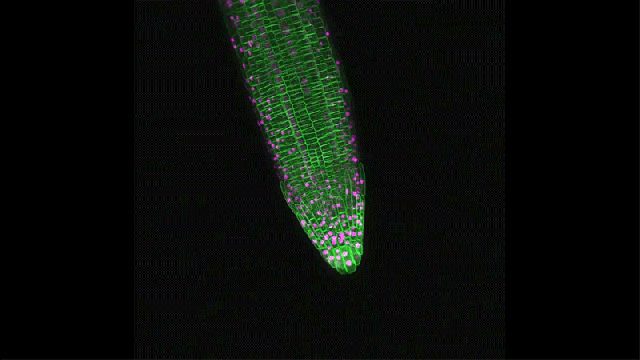Microscopes let us observe some of the smallest objects in our universe, but with limitations when it comes to movements that can take hours, days, even weeks to play out. So a team of Austrian scientists developed new software that allows microscopes to not only track a slowly-moving object, but also capture incredible timelapse footage, speeding up the action.
The researchers at Austria’s Institute of Science and Technology were studying cell growth in plant roots, including when and why roots split and produce additional offshoots. Because the process can take days, requiring constant adjustments to a microscope and non-stop photography, the team developed custom software and hardware allowing them to capture amazing microscopic timelapses with ease.
Software capable of automatically tracking moving objects is nothing new — Hollywood has been relying on it to realise the fancy digital effects in blockbuster films for decades now. But to get it to work on the microscopic level, the scientists relied on lasers to illuminate fluorescent proteins in tiny plants (Arabidopsis thaliana, in this case) which gives the software something to lock onto.
The team also had to develop a special lighting system to keep the plants alive and flourishing during the prolonged shoot, and the process even required them to turn their microscope on its side to image plant roots growing downward under the pull of gravity.
In addition to producing impressive timelapse footage, the setup also allows high-resolution image data to be collected, which can be used to generate 3D interactive models. This allows researchers to study moving microscopic objects from many angles, not just the original perspective captured by the microscope. The technique has even been shown to work on other living things, like the cells of an embryonic Zebrafish, giving researchers new insights into growth and other phenomenon that would otherwise be invisible to the naked eye, and to traditional cameras.
